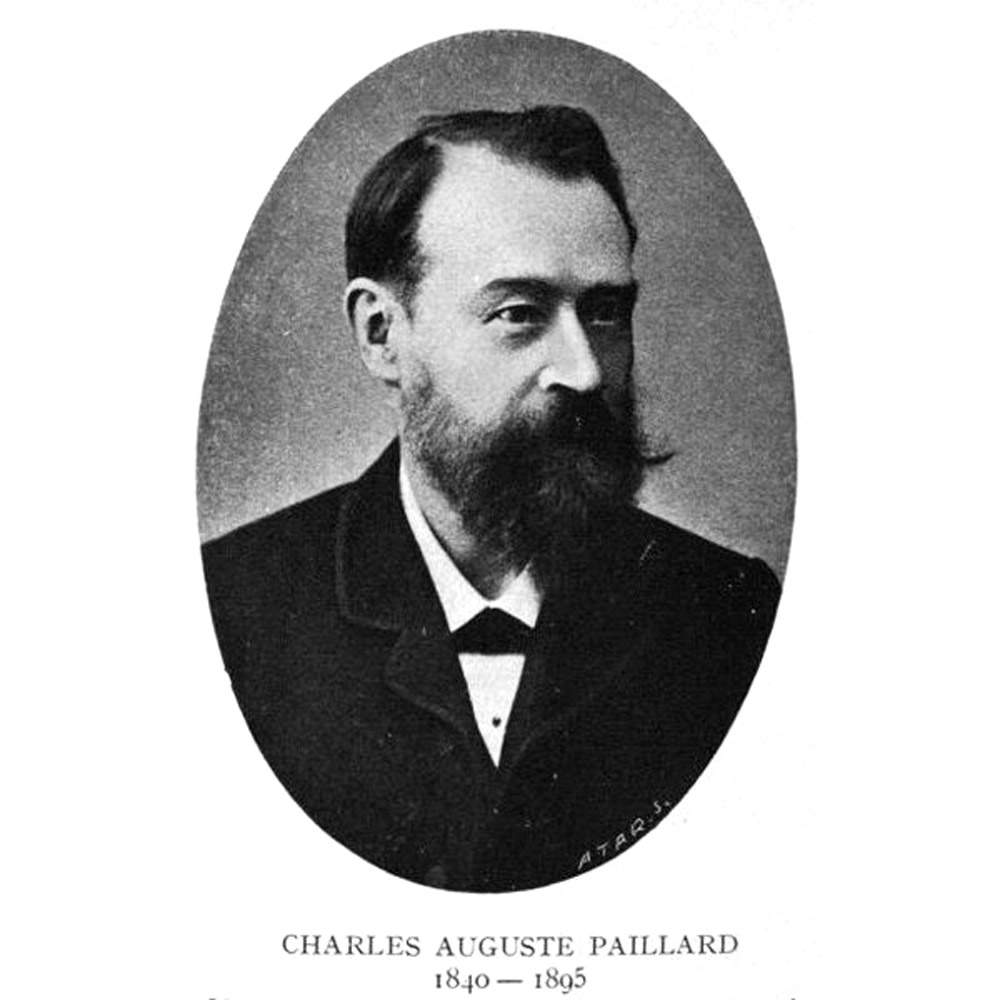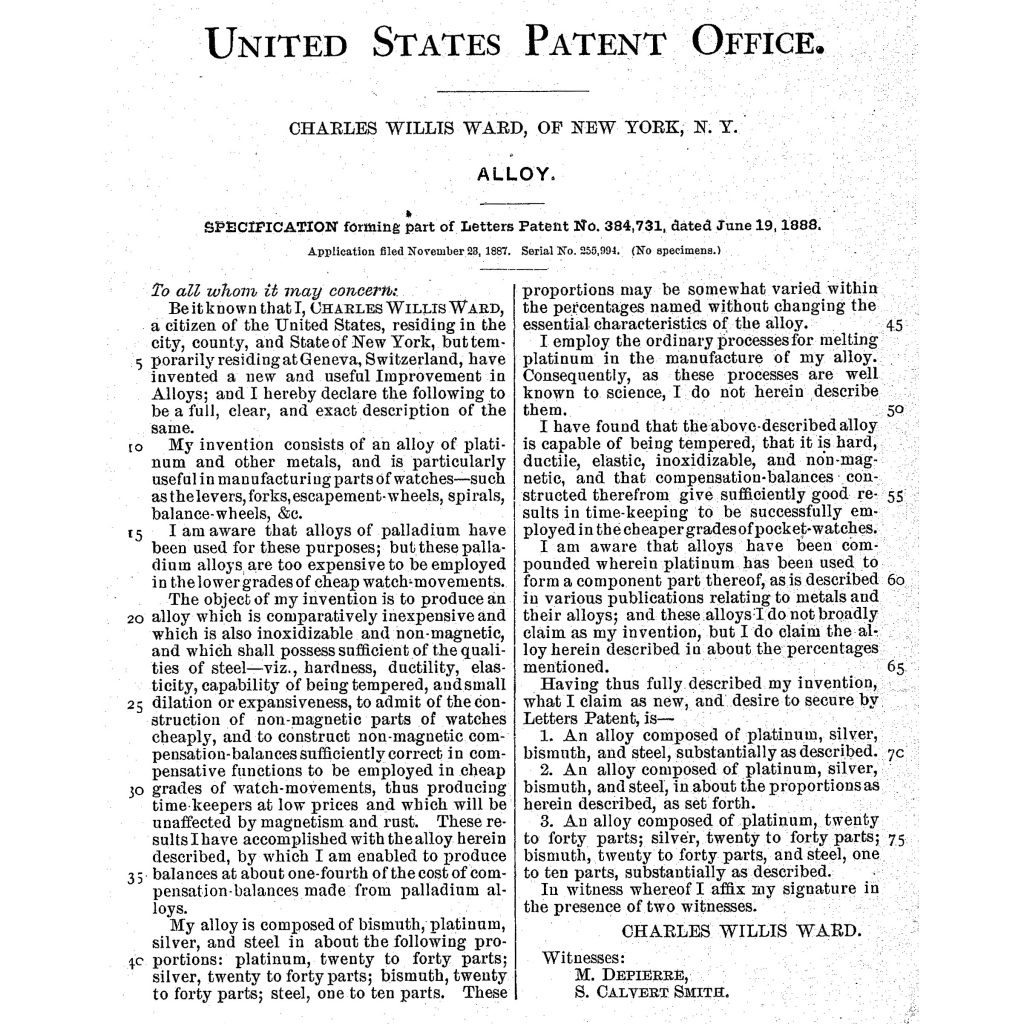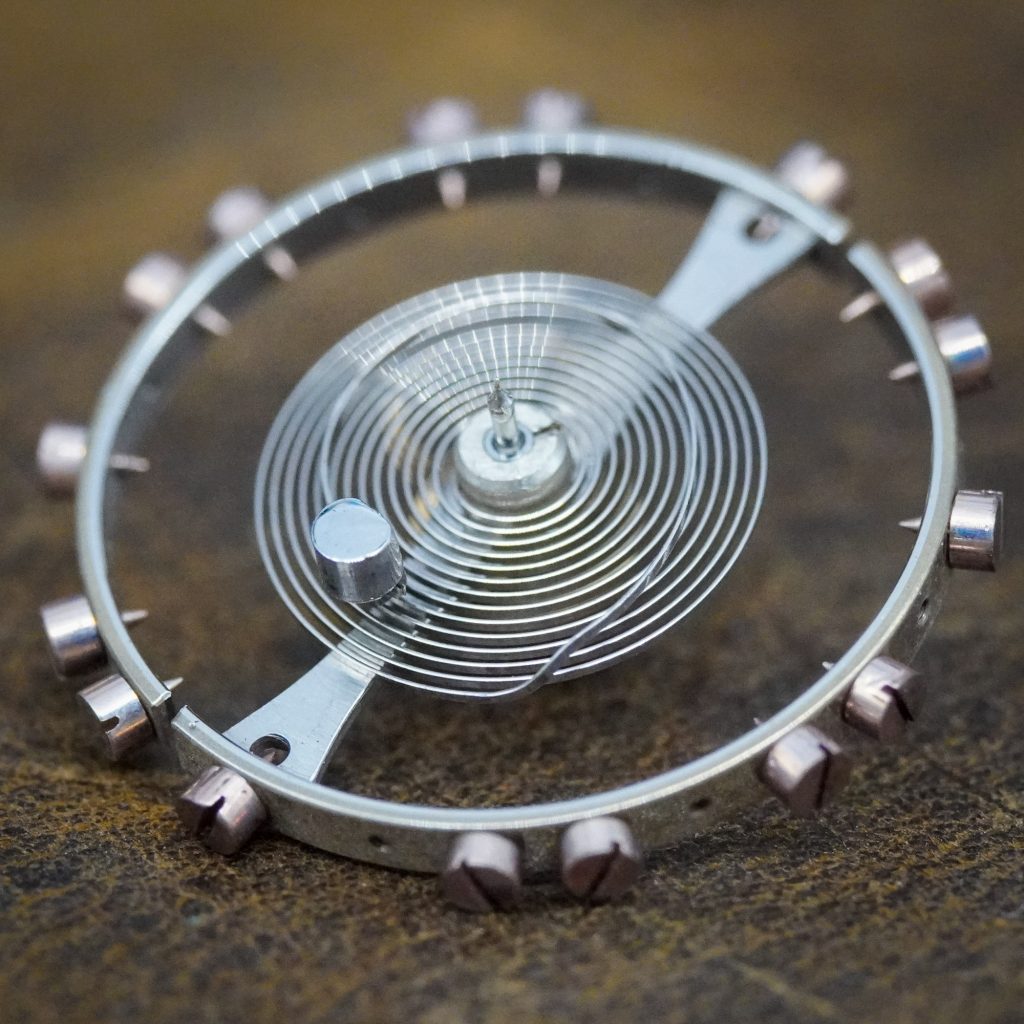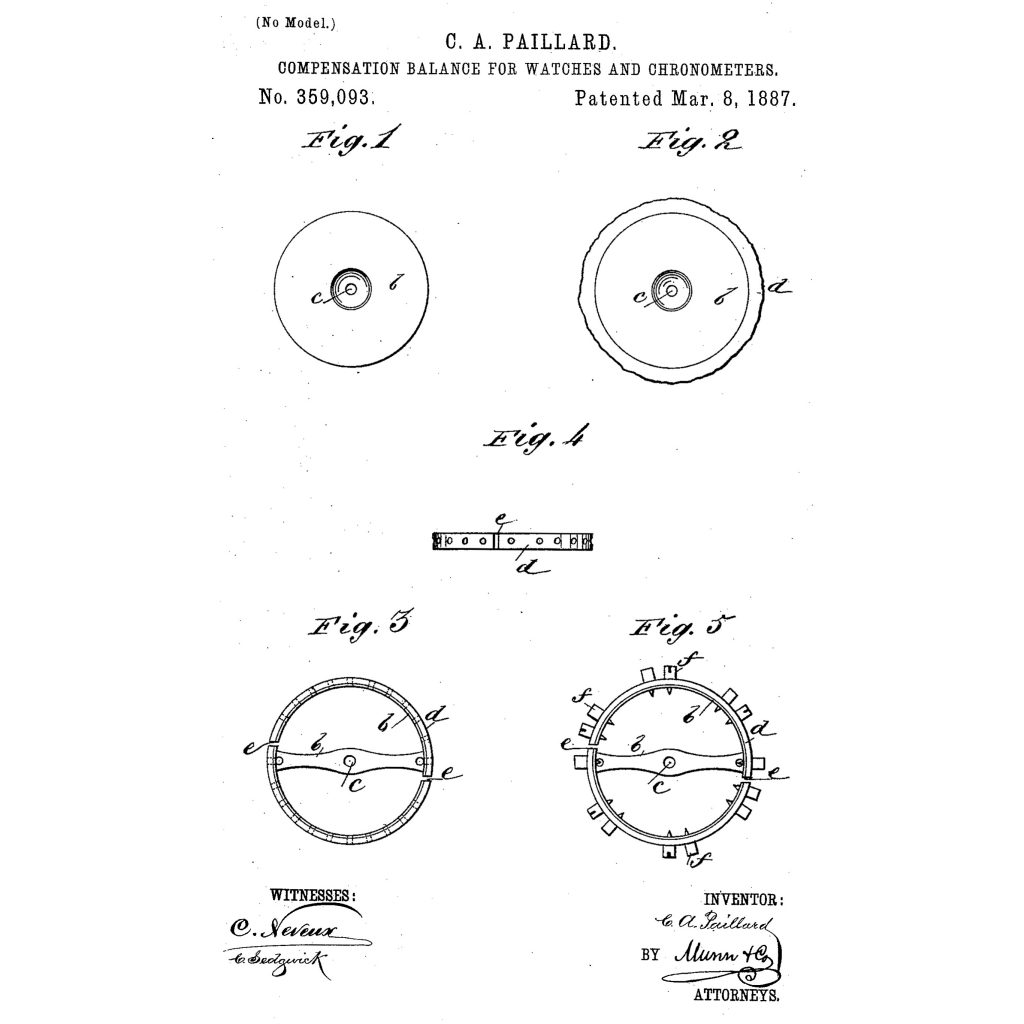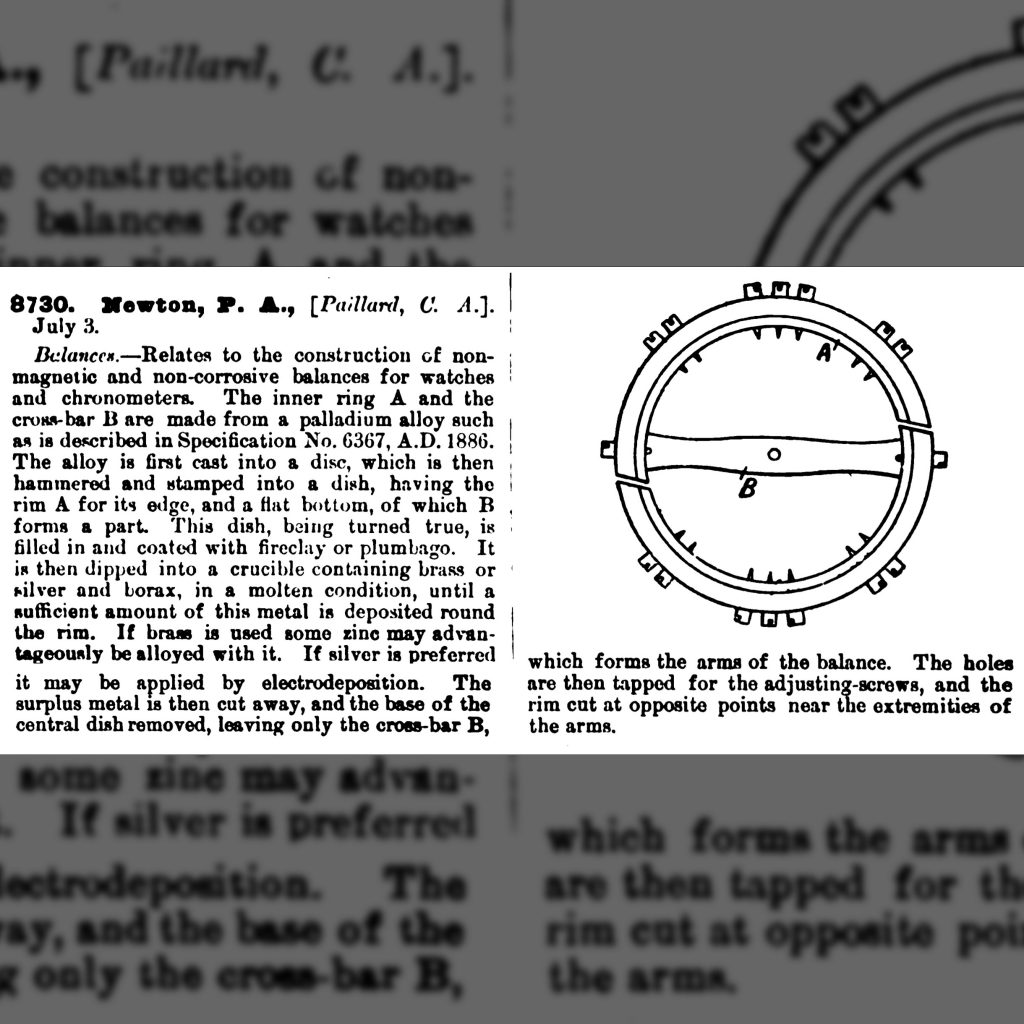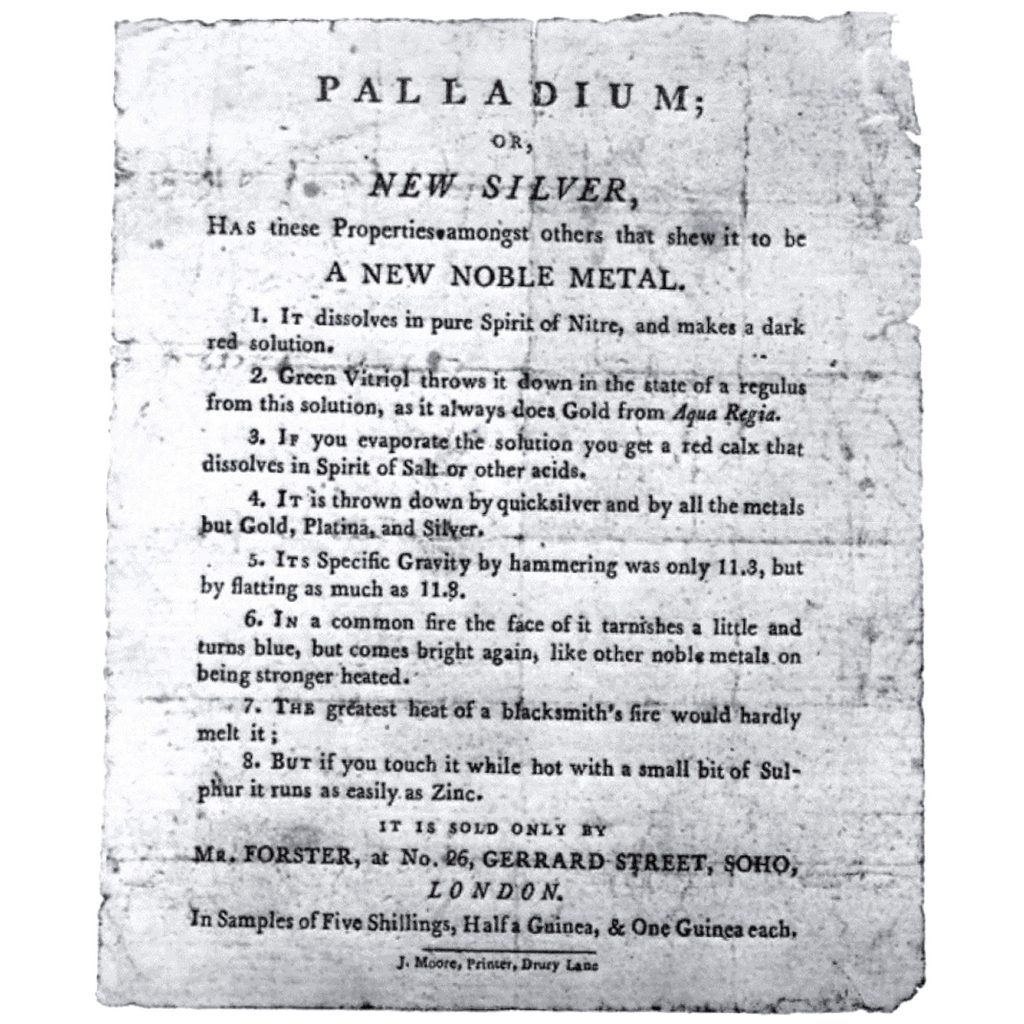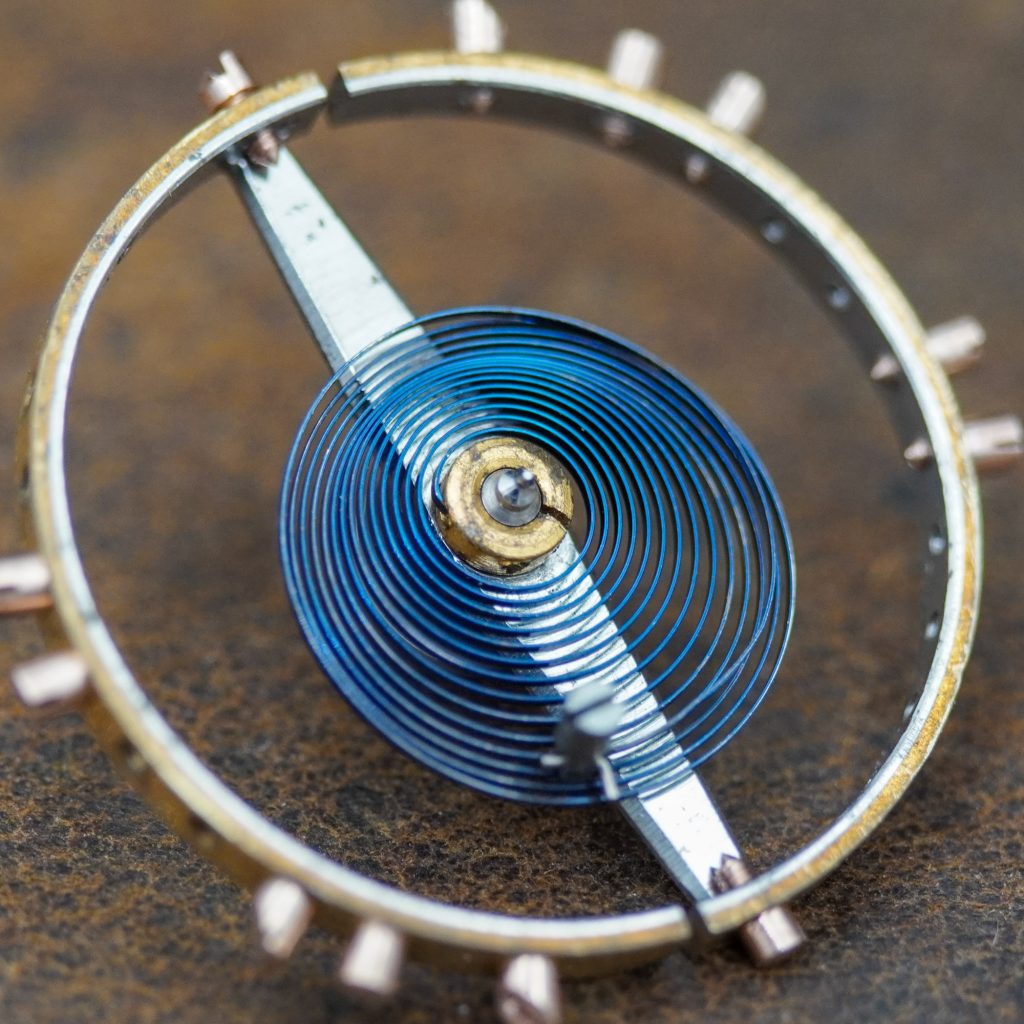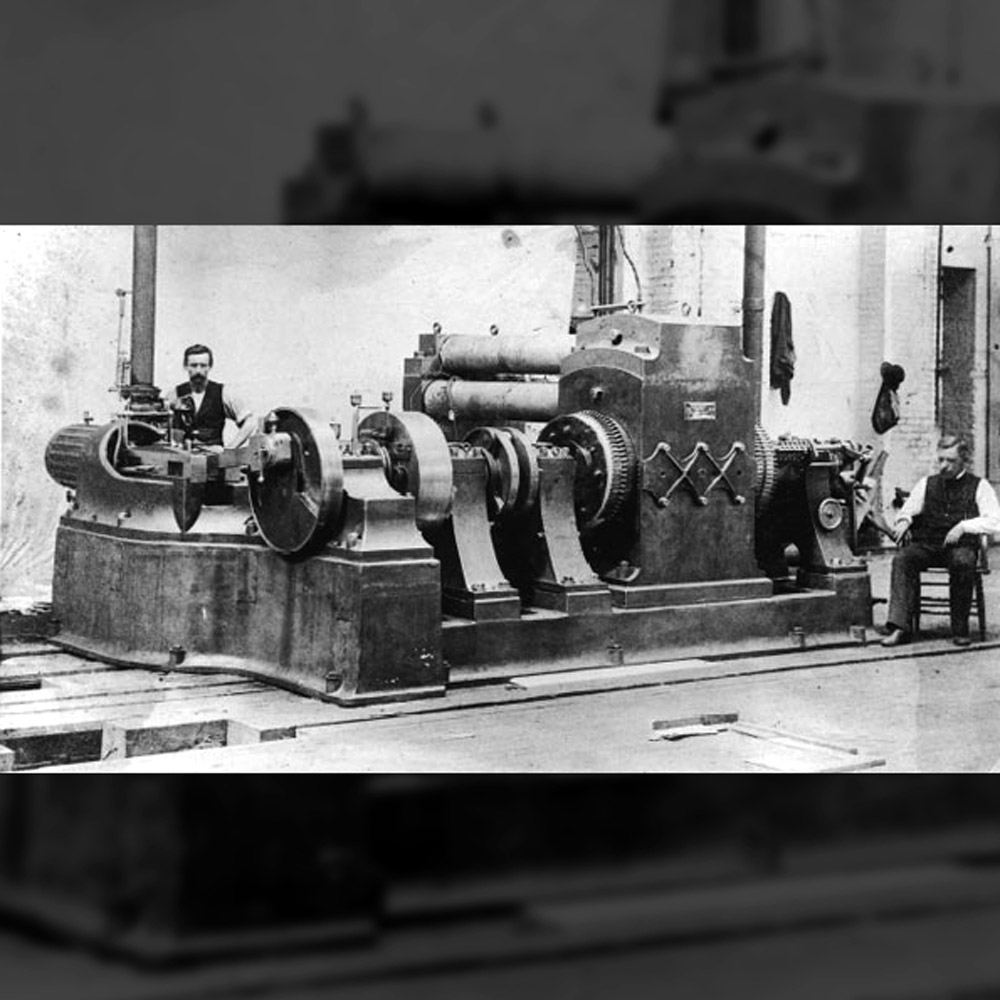
Non-Magnetic Watch Co.

Pictured: U.S. Patent #384,731 Charles-Auguste Paillard received six patents in the United States for his innovative palladium alloys used in watchmaking. Paillard’s alloys were immune to corrosion, did not dilate.
Pictured: Paillard’s Palladium Balance and Hairspring Charles-Auguste Paillard originally developed his palladium alloys to provide a more suitable material for the construction of fine marine chronometers. As a result of.
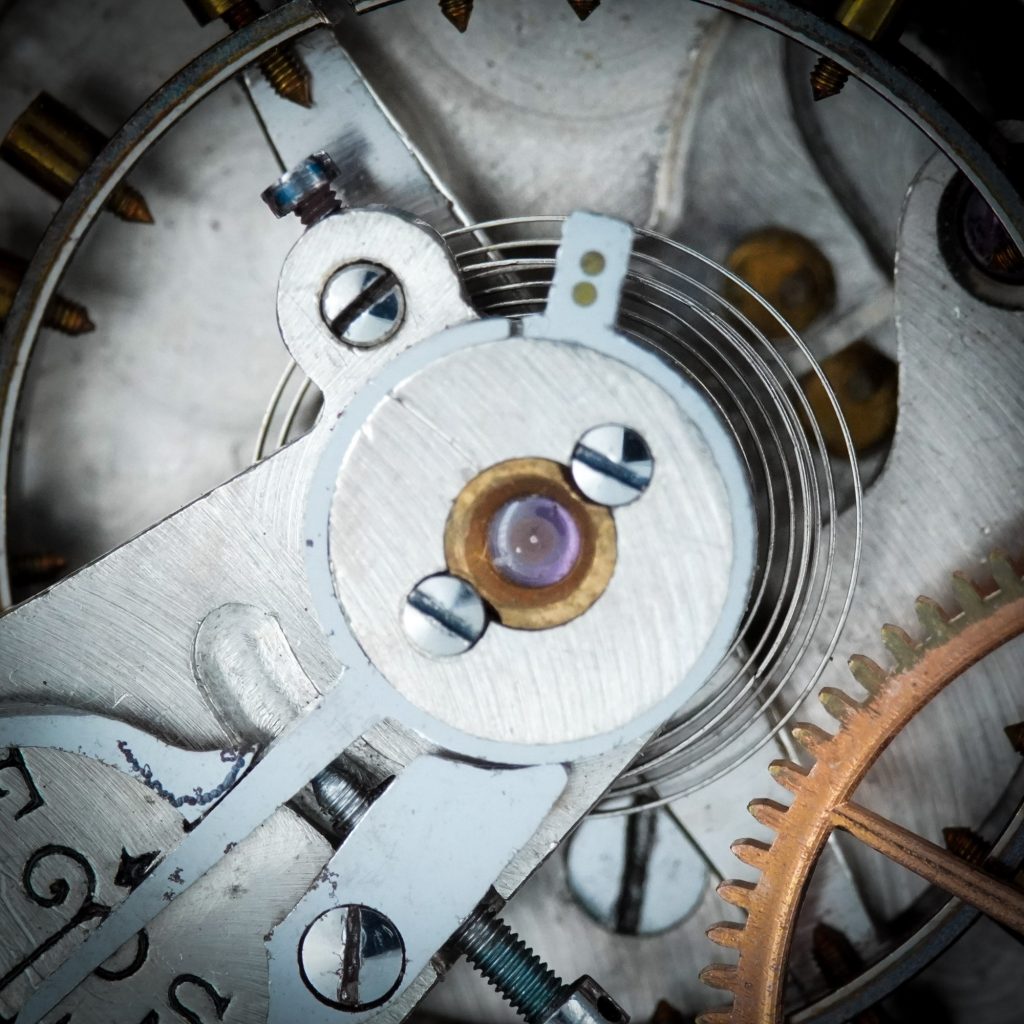
Pictured: C.A. Paillard’s Palladium Compensation Balance U.S. Patent #359093. In addition to seeking patents in Europe, Charles-Auguste Paillard submitted patent applications in the United States to protect the use of.
Pictured: C.A. Paillard’s Palladium Balance Abstract of English Patent #8730. While the most delicate part of a watch to be significantly affected by magnetism and corrosion is the hairspring, the.
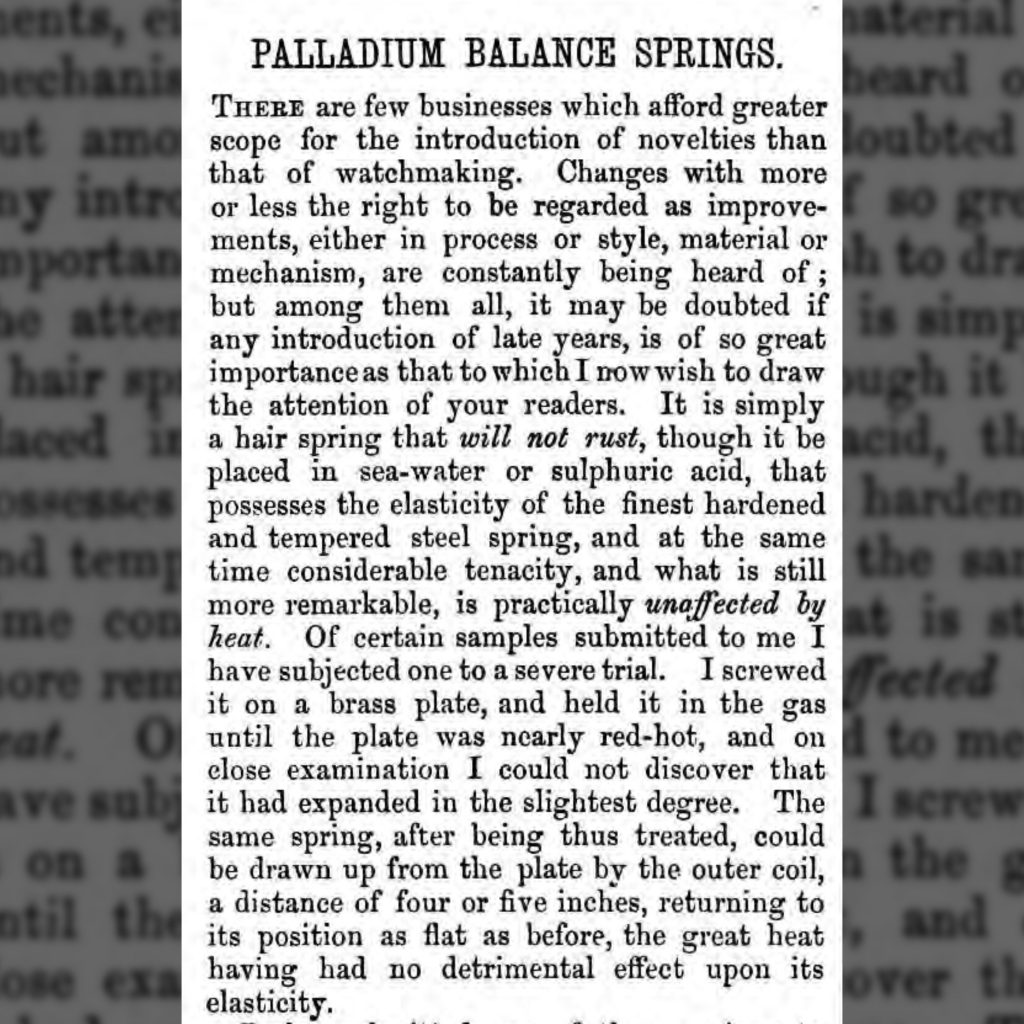
Pictured: “Palladium” Handbill, Published in the August 1803 issue of Nicholson's Journal In 1803, chemist William Hyde Wollaston discovered palladium while experimenting with purification methods for platinum. Wollaston originally called.
Pictured: Magnetized Balance and Hairspring As electricity was fervently adopted in the late 1800s to power lighting and other devices, the influence of magnetism on watches became a more significant.
